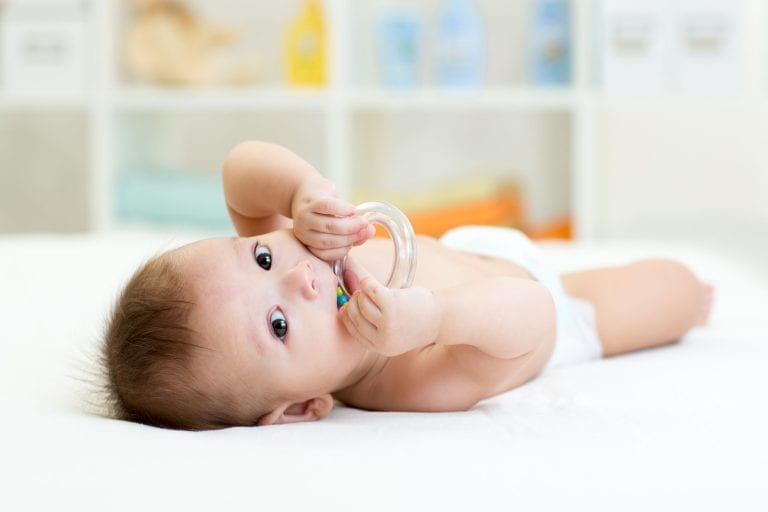Filter Your Baby’s Environment
When we think of creating a “green” environment for our baby, we often think of natural wood cribs, low or no-VOC paints, and organic furnishings. However, filtering harmful substances and chemicals from your baby’s life is just as important as a safe nursery.
When you’re pregnant or breastfeeding, you’re giving your baby the important nutrients she needs to thrive. You’re also introducing her environment, good and bad. And those exposures through you and your breastmilk and her home during her early development can influence her lifelong health. Here are some of the most common and well-researched exposures to avoid, to give baby the greenest start possible.
Tobacco Smoke
Smoking during pregnancy can lead to stillbirth, premature birth, and a higher risk of SIDS, asthma, and learning disabilities for your baby. If you’re smoking and pregnant, quit now — there are many resources to help you.
If you live with someone who smokes, ask them to keep it out of the house so you can breathe clean air for your developing baby. This is equally as important during and after your pregnancy, especially in baby’s home environment and nursery.
SEE ALSO: Tobacco During Pregnancy: Quitting Anytime Helps
Mercury
Eating fish can give you and your baby brain-boosting nutrients like DHA and omega-3 fatty acids, but avoid fish high in mercury like shark, swordfish, king mackerel, and tilefish. Mercury is a neurotoxin that can hurt your baby’s brain development, and mercury consumed during pregnancy concentrates in your developing baby, giving her an even greater exposure than you get as the mom.
The EPA recommends that pregnant and breastfeeding women eat fish twice per week and choose low mercury fish like salmon, shrimp, and tilapia.
Lead
Lead is a neurotoxin that can hurt your baby’s mental development and increase risks of miscarriage and birth defects, especially if you are exposed to lead during your first trimester.
To avoid lead exposure, never eat non-food items like gravel or paint chips, even if you crave them during pregnancy (called pica). Avoid hobbies that involve lead, like car repair, ceramics, furniture refinishing, and art restoration. And avoid repairs or renovations on homes built before 1978, which may contain lead dust from paint and other materials.
A simple way to further reduce exposure is to remove your shoes when you enter your house, so you don’t bring in the pollutants you collect outside into your environment.
Pesticides
Exposure to pesticides during pregnancy is associated with higher risk of complications and birth defects. High exposures could include spraying for insects in your house or weeds in your garden, or living near farming areas with heavy pesticide use.
Don’t apply any pesticides in your home during pregnancy, especially during the 1st trimester. Clean up food and cover garbage to prevent pest problems, and if they still happen, try baits and traps instead of sprays.
SEE ALSO: Green Cleaners: Clean Like Your Life Depends on It!
Even with these precautions, you will still bring pesticides home from the grocery store on your food. Consider buying organic, and wash all your produce carefully. To better wash off pesticides, use 1 part vinegar and 4 parts water to soak produce, then rinse thoroughly in running water.
Endocrine-disrupting chemicals (EDCs)
Be careful of your exposure to endocrine-disrupting chemicals. These chemicals mimic hormones and can cause problems with thyroid and brain development, and the fertility and hormones of your developing baby.
Some of the common chemicals to watch out for are BPA and phthalates, both commonly found in plastics. To reduce your exposure, eat less pre-packaged and canned food, buy more fresh or frozen produce and buy organic, if possible.
Avoid using plastics in your food preparation and storage. Chemicals accumulate in household dust, so use a vacuum with a HEPA filter to get rid of those contaminants. Another source of phthalates is cosmetics, so look for natural care products with short lists of ingredients that you recognize.
Buy Produce Organic When Possible
The Environmental Working Group provides these lists of foods with the highest and lowest concentrations of pesticides:
The Dirty Dozen
- Apples
- Celery
- Cherry Tomatoes
- Cucumbers
- Grapes
- Nectarines
- Peaches
- Potatoes
- Snap Peas
- Spinach
- Strawberries
- Sweet Bell Peppers, hot peppers, kale/collard greens
The Clean 15
- Asparagus
- Avocados
- Cabbage
- Cantaloupe
- Cauliflower
- Eggplant
- Grapefruit
- Kiwi
- Mangoes
- Onions
- Papayas
- Pineapples
- Sweet Corn
- Sweet Peas (frozen)
- Sweet Potatoes






Comments are closed.